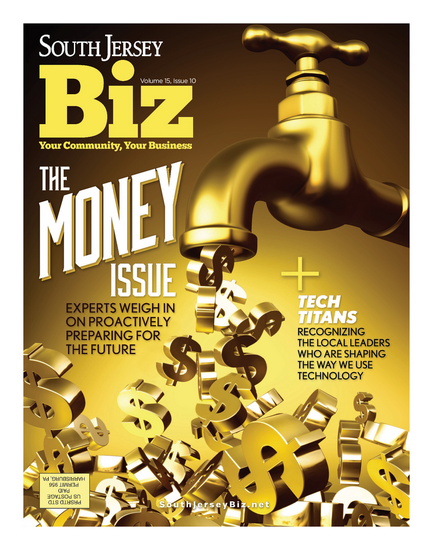
It may feel like a future described only in science-fiction is upon us: self-driving cars, facial recognition technology, and artificial intelligence (AI) software that expands its knowledge by processing an unlimited amount of data. While these advancements can seem alarming at first, they are also significant assets in improving efficiency, security, products and services, and ultimately, profit. However, optimizing telecommunications in a business requires not only an understanding of the systems but also a willingness for continued learning as they evolve, human oversight and a desire for modernization.
In observing the current and potential impact of the AI industry, Governor Phil Murphy announced plans to make New Jersey both a positive example and East Coast leader back in 2023. The NJ AI Hub is a collaborative effort between Gov. Murphy, Princeton University President Christopher L. Eisgruber, Microsoft and CoreWeave—who are expected to make a $72 million investment, according to a press release from the Governor’s Office late last month.
“As the AI industry rapidly evolves, it’s imperative that we capitalize on this moment in New Jersey. I’m incredibly proud of this partnership with the top leaders in the industry and higher education, which further establishes our state as a hub for cutting-edge AI innovation and talent,” Gov. Murphy said in the Jan. 31 press release. “AI’s economic and innovation potential is vast, giving us the chance to take our state to new heights. This partnership will not only solidify New Jersey’s position as a global technology leader, it will also attract high-paying, sustainable jobs for our residents, allowing for a stronger and more prosperous future for our state.”
One effective AI function that can be utilized in many workplaces is the ability to see speech transcribed in real time, whether in a meeting or during an important phone conversation. Some of these services even offer suggested summaries and the ability to translate between languages, which takes communication to soaring new heights. It also improves retention of information and the accuracy of information, while also making it more accessible for those who may benefit from visual aids.
VoIP Doctors CEO Hala Shawaf Barson and CTO Michael Barson describe implementing AI technology for customized and improved communication, as well as for “enhancing security measures with blockchain technology.”
“Initially, we started off as a hosted communications provider, delivering cost-effective VoIP solutions. As the demand for more integrated communication solutions grew, we added Microsoft Direct Routing to our services, enabling seamless integration with Microsoft Teams,” they say. “Now, we are incorporating AI to enhance our clients' communication capabilities, offering features like real-time call transcriptions. These advancements allow our clients to leverage cutting-edge technology to improve efficiency and productivity.”
Facilitating the implementation of cutting-edge technology depends on not only constant awareness of ever-changing trends, but also collaboration with and among experts. In addition to advancing communication and security, another integral telecommunication element to keep in mind is data and its synchronization. The storage and sharing of data is commonly known as a “cloud,” which is third-party created software that processes data, stores it, and allows approved viewers to access it through an internet connection.
“The latest technology affecting our customers would be AI and its impact on the customer experience. We are working with companies and open-source communities to cost-effectively incorporate this technology into our nCloud UCaaS product,” explains NetCarrier’s Chief Revenue Officer Jerry Stabile. “We anticipate big things for the platform in 2025 utilizing this technology. Areas such as customer experience, technical support, call center, and several other functions will benefit from the inclusion of AI in nCloud. The main benefit of AI will be how it improves our customers—bottom line.”
Stabile emphasizes that cloud-based systems are effective in reducing costs, allow employees to work from anywhere, and increase productivity, data security and collaboration. In this era, audio, text and video services are commonplace—but it is rapidly expanding. That is, what was not long ago considered the most cutting-edge technology is now obsolete.
Take, for example, how USB and HDMI ports are no longer built into the newest laptop models. While these tools are still sometimes necessary, cloud software alleviates the need for them because it allows syncing across any number of devices—as well as between types of them. This also is an effective way to both preserve and protect important files if a device breaks.
“The ability to start small and grow [a] business is a key factor in startups and small businesses. Professional services, health care, education and nonprofits all benefit from unified communications. It improves their capability to collaborate with customers and business partners by providing anywhere at any time connectivity,” affirms Stabile. “Cloud delivery reduces the cost and time to value over legacy technologies like premises-based equipment. Managing and maintaining a modern cloud-based, unified communication system is done virtually without needing to roll trucks and technicians making adds/moves/changes and system upgrades seamless and timely.”
Ultimately, innovative technology can be an advantage in any business or industry. Everything is data, after all. From class rosters at a school to menu items at a restaurant, technology can be integrated anywhere to save time and energy to instead focus on the core of a business.
“Telecom services are vital across various industries. In health care, they enable telemedicine and secure data transmission for virtual consultations. The finance sector relies on them for secure transactions and real-time trading. Education benefits from e-learning platforms and virtual classrooms, while retail uses telecom for online transactions and customer support,” affirm Shawaf Barson and Barson. “Manufacturing leverages telecom for automation and IoT, improving efficiency. Transportation and logistics depend on GPS tracking and real-time communication to optimize routes. Entertainment and media rely on high-speed internet for streaming and digital content distribution. Lastly, government and public safety use telecom for emergency response and secure communications.”
As the tech world rapidly amalgamates not only into daily life, but in legislation and government—both locally and on a national scale—remaining educated and maintaining knowledge of trends is essential even without first-hand usage. New Jersey’s continued optimization of these resources make the recognition of them inevitable. So, it’s best to find what works best on an individual level, with no shortage of options to explore.
Click here to subscribe to the free digital editions of South Jersey Biz.
To read the digital edition of South Jersey Biz, click here.
Published (and copyrighted) in South Jersey Biz, Volume 15, Issue 2 (February 2025).
For more info on South Jersey Biz, click here.
To subscribe to South Jersey Biz, click here.
To advertise in South Jersey Biz, click here.








